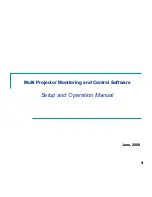
The
M
key has changed from
Select Previous Clip
to
Match Frame to Bin
.
The
<
key has changed from
Select Next Clip
to
Mark Area
.
The
>
key has changed from
Select Previous Track
to
Show Search Results (local)
.
The
?
key has changed from
Select Next track
to
Find (local)
.
Refer to the following section for a complete description of the new keyboard look
Keyboard Overview
on page 51.
•
Orad Graphics Integration
—
Aurora Edit and Aurora Edit LD have an end-to-end
work
fl
ow with the Orad graphics system. This includes integration from the
journalists desktop directly to playout on air. From the journalist desktop, Orad
has a standard plug-in that allows operators to access, add, or modify graphics that
can be linked to scripts as MOS objects. From Aurora Edit or Aurora Edit LD,
editors can link to scripts and copy graphics directly to the Timeline. The graphic
can be previewed by double-clicking the graphic on the Timeline to open the Orad
plug-in where the editor can make changes. Once a sequence has been sent with
graphics from Orad in the Timeline, Aurora Edit will embed timing information
for graphics triggering from Aurora Playout. Refer to
The Orad Graphics Tool
on
page 58 in New Topics for more information on using Orad.
•
VizRT Graphics Integration
—
A new work
fl
ow has been introduced with this
release to provide integration with the VizRT graphics system. This includes
integration from the journalist desktop directly to the Timeline in both Aurora Edit
and Aurora Edit LD. From the journalist desktop, VizRT has a standard plug-in
that allows operators to access, add, or modify graphics that can then be linked to
scripts as MOS objects. From Aurora Edit, editors can link to scripts and copy
graphics directly to the Timeline. The graphic can be previewed by double-clicking
the object in the Timeline to launch the VizRT plug-in. Editors have the same
add/modify capabilities as the journalist do within the VizRT plug-in. Once a
graphic is ready on the Timeline, the operator retrieves the graphic to pull it from
the VizRT graphics server as a video
fi
le with alpha. The editor can then transfer
to playout with the burned in graphic already on the Timeline. Refer to
The VizRT
Graphics Tool
on page 60 in New Topics for more information on using VizRT.
•
Linking Video MOS objects to Timeline
—
Within the Aurora Suite, both feed
events and
fi
nished stories become MOS Objects within the newsroom computer
system. The MOS Objects may be searched on and linked to stories for use within
Aurora Edit. Once a feed has been started in the Aurora Ingest Scheduler application,
the video become searchable within ENPS. This provides a fast method of
fi
nding
feed and placing it into a news story as a MOS object that can easily be brought
into Aurora Edit and edited as desired. Refer to
Linking video MOS objects to the
Timeline
on page 64 In New Topics for an overview of this feature.
•
Graphics import in Aurora LD
—
As a basic addition to Aurora Edit LD,
operators can access the File Import Graphic option for importing still graphics
such as .tga and .bmp
fi
les. This is the same functionality as the high-resolution
Aurora Edit, but Aurora Edit LD must import the
fi
le into a directory that it has
access to. If it is not attached to the high-resolution directory (V), then it must
import to a directory that it has access to. Note that only still graphics may be
imported; animated sequential .tga
fi
les are not supported for Aurora Edit LD.
•
All Animations and .tga Sequences now on Graphics Track
—
Due to graphics
changes, all animations and .tga sequences will now be on the Graphics (G) track.
They will no longer be on the FX and V2 tracks as they were in previous releases.
18 October 2010
Aurora Edit and Edit LD Version 7.1.0 Release Notes and Upgrade Instructions
7
Release Summary








































